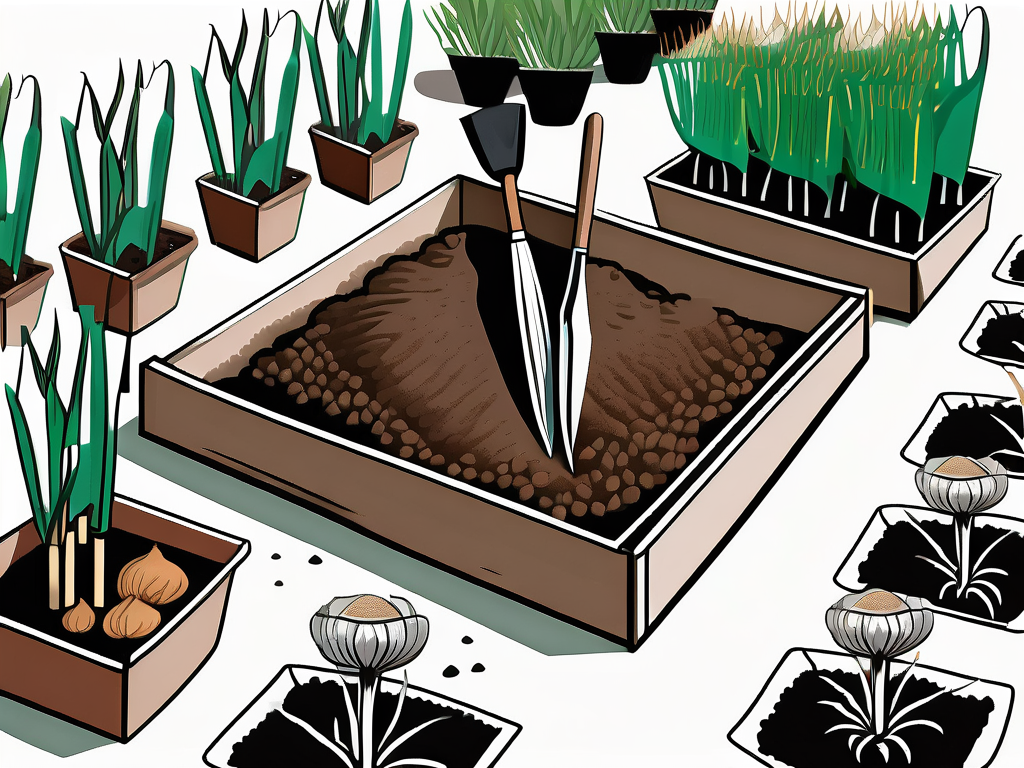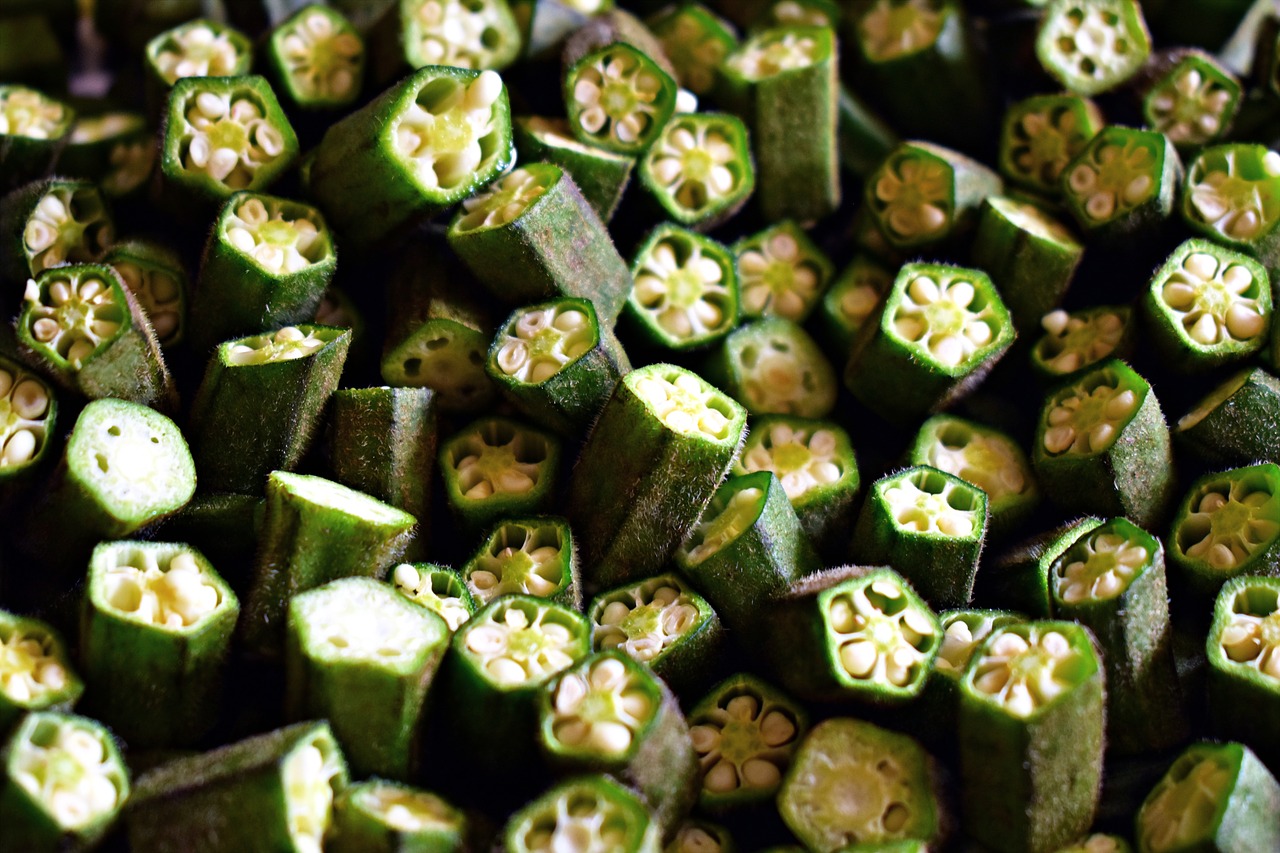Garlic is a versatile and flavorful herb that can enhance various dishes. Growing your own garlic can be an incredibly rewarding experience and provides you with fresh bulbs that have superior flavor compared to store-bought options. This guide will take you through the essential steps to cultivate garlic successfully in your garden.
Understanding the Basics of Garlic Cultivation
Before diving into the process of planting garlic, it’s important to understand the fundamental aspects of garlic cultivation. This herb is unique in its growth requirements and thrives under specific conditions.
Types of Garlic to Grow
There are two primary types of garlic: hardneck and softneck. Hardneck garlic varieties tend to have a more robust flavor and produce a flower stalk known as a scape. On the other hand, softneck garlic varieties are commonly found in grocery stores and have a longer shelf life.
If you’re unsure which type to grow, consider your local climate and culinary preferences. Some popular hardneck varieties include Rocambole and Porcelain, while the softneck varieties include Artichoke and Silverskin. Additionally, hardneck garlic is often favored by gourmet chefs for its complex flavor profile, making it a great choice for those looking to elevate their culinary creations.
Ideal Climate and Soil Conditions for Garlic
Garlic thrives in climates with a distinct cold period and well-drained, loamy soil rich in organic matter. The ideal temperature for garlic growth ranges from 60°F to 80°F (15°C to 27°C). Garlic benefits from a cold period in winter, which helps the bulbs establish properly.
To gauge your soil conditions, it’s recommended to conduct a soil test, checking for pH levels between 6.0 and 7.0. If your soil is too acidic, consider adding lime to adjust its pH. Furthermore, incorporating organic matter, such as compost or well-rotted manure, can significantly enhance soil fertility and structure, promoting healthier garlic plants. It’s also beneficial to ensure that your planting area receives full sun for at least six hours a day, as this light exposure is crucial for robust growth and bulb development.
When preparing your garden bed, consider rotating your garlic with other crops to prevent soil-borne diseases and pests. Garlic is known for its natural pest-repelling properties, which can benefit neighboring plants. Additionally, mulching around the garlic can help retain moisture, suppress weeds, and regulate soil temperature, creating an ideal environment for your garlic to flourish.
Preparing Your Garden for Garlic Planting
Preparation is key to successful garlic cultivation. The steps you take before planting can significantly affect your garlic yield.
Choosing the Right Location
Select a location that receives full sun for at least 6 hours a day. Garlic grows best in areas where other plants haven’t been in the same family for several years. This helps reduce the chances of soil-borne diseases.
Look for a spot that has good drainage to prevent bulb rot. Raised garden beds can be an excellent option if your garden has heavy soil. Additionally, consider the proximity to a water source, as garlic requires consistent moisture, especially during its early growth stages. A location that is sheltered from strong winds can also help protect your plants as they mature, ensuring they remain upright and healthy.
Soil Preparation Techniques
Once you’ve chosen the perfect location, it’s time to prepare your soil. Start by clearing the area of weeds and debris. Then, incorporate compost or well-rotted manure to enhance soil fertility.
Tilling the soil to a depth of 12 inches will help aerate it and promote healthy root development. Additionally, make sure to level the soil to ensure proper water drainage. A well-prepared plot will provide the right foundation for your garlic plants. To further enrich your soil, consider conducting a soil test to determine pH levels and nutrient content. Garlic thrives in slightly acidic to neutral soil, ideally with a pH between 6.0 and 7.0. If your soil is too acidic, you can add lime to raise the pH, while sulfur can be used to lower it if necessary. Incorporating these amendments will create an optimal environment for your garlic to flourish.
Planting Your Garlic
With your garden bed neatly prepared, it’s time to plant your garlic cloves. Timing and technique are critical for ensuring successful growth.
When to Plant Garlic
The best time to plant garlic is in the fall, ideally around four to six weeks before the ground freezes. This timing allows the cloves to establish roots before the onset of winter.
In warmer climates, you can also plant garlic in early spring. However, fall planting generally yields better results due to the extended growing season. Garlic benefits from the cold winter months, which helps to enhance its flavor and promotes larger bulb formation come harvest time. Observing local weather patterns can also guide your planting schedule, as some regions may experience milder winters that allow for earlier planting.
How to Plant Garlic Cloves
To plant garlic cloves, break the bulbs apart, ensuring each clove has its base intact. Plant individual cloves about 2 inches deep and 6 inches apart, with the pointed end facing upwards.
After planting, cover the cloves with soil and gently water the area to encourage germination. Mulching with straw or wood chips is also beneficial, as it helps retain moisture and prevents weeds. Additionally, mulching provides insulation during colder months, protecting the cloves from extreme temperatures. As the garlic begins to sprout in the spring, be vigilant about watering, especially during dry spells, as consistent moisture is crucial for robust growth. Moreover, consider incorporating organic fertilizers or compost into the soil before planting to enrich the nutrient content, which can lead to healthier plants and a more bountiful harvest.
Caring for Your Growing Garlic
As your garlic begins to grow, proper care will ensure robust plants and plentiful bulbs during harvest time. Garlic is not only a culinary delight but also a resilient plant that can thrive in various conditions, making it a favorite among home gardeners. Understanding the specific needs of garlic at different growth stages will help you achieve a bountiful harvest.
Watering and Fertilizing Your Garlic
Garlic requires regular watering, especially during dry spells. Aim to keep the soil consistently moist but not waterlogged. Over-watering can lead to disease while under-watering can stunt growth. It’s essential to monitor rainfall and adjust your watering schedule accordingly, especially as the bulbs begin to swell in late spring and early summer, which is when they need the most moisture.
A balanced fertilizer can be applied in early spring as the garlic starts to grow. Look for a product that is high in nitrogen to promote healthy leaf development, which is essential for bulb formation. Additionally, consider incorporating organic matter, such as compost, into your soil before planting. This not only enriches the soil with nutrients but also improves its structure, enhancing drainage and root development.
Dealing with Pests and Diseases
While garlic is generally resistant to pests and diseases, certain issues may arise. Watch for signs of aphids, nematodes, or fungal diseases like white rot. Early detection is key; regularly inspect the leaves and bulbs for any unusual spots or discoloration. If you spot any pests, it’s advisable to act quickly to prevent them from spreading to other plants in your garden.
Practicing crop rotation and maintaining good garden hygiene can minimize the impact of pests and diseases. If you notice any problems, consider using organic pest management techniques to control the situation without harmful chemicals. Companion planting with herbs like basil or marigolds can also deter pests naturally. Furthermore, ensuring proper spacing between your garlic plants allows for better air circulation, reducing the likelihood of fungal infections and promoting overall plant health.
Harvesting and Storing Garlic
Once the harvest time approaches, you’ll want to identify when your garlic is ready for picking to ensure optimal flavor and storage longevity.
Signs Your Garlic is Ready to Harvest
Typically, garlic is ready to harvest when the lower leaves start to turn brown, while some green leaves remain at the top. This usually occurs in mid to late summer, about 8-9 months after planting.
Another sign of readiness is the formation of tightly closed bulb wrappers, indicating the cloves have fully matured. The ideal timing is crucial, as waiting too long can lead to split bulbs, which may compromise their storage life and flavor profile.
How to Harvest Garlic
To harvest garlic, carefully loosen the soil around the bulbs using a garden fork or spade, taking care not to damage the bulbs. Gently pull the garlic plants from the ground by their stalks. It’s best to do this on a dry day to minimize moisture exposure, which can lead to rot.
Once harvested, shake off excess soil, and bundle them in groups of 6-10. It’s crucial to avoid washing them as moisture can lead to decay. If you notice any dirt clinging to the bulbs, simply brush it off gently with your hands or a soft cloth. This will help preserve their integrity during storage.
Proper Garlic Storage Methods
After harvesting, garlic needs proper storage to maintain its flavor and prevent spoilage. Store garlic in a cool, dark, and well-ventilated area, ideally at temperatures between 60°F and 65°F (15°C to 18°C). A pantry or a dedicated storage area in your kitchen can work well, provided it meets these conditions.
Avoid storing garlic in plastic bags, which can trap moisture and promote mold. Instead, consider using mesh bags or hanging garlic in braids to enhance air circulation. Additionally, some gardeners opt for storing garlic in a basket or an open container, allowing for maximum airflow. Regularly check your stored garlic for any signs of sprouting or decay, as this can help you maintain the quality of your harvest.
With the right care and techniques, you can enjoy a bountiful harvest of garlic that lasts throughout the year. Growing your own garlic not only elevates your culinary creations but can also be a fulfilling gardening project. The satisfaction of using homegrown garlic in your recipes adds a personal touch, and you may find that the flavor is far superior to store-bought varieties, enhancing everything from simple pasta dishes to gourmet sauces.







